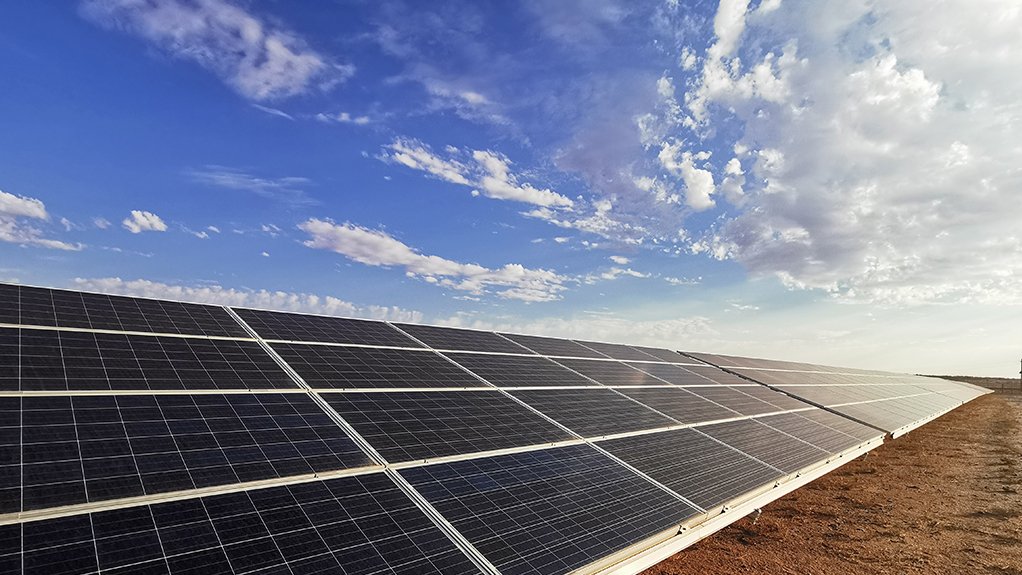Three additional geographic areas – Emalahleni, Klerksdorp and Beaufort West – have officially been declared as Renewable Energy Development Zones (REDZs) following the publication of a Government Gazette notice signed by Environment, Forestry and Fisheries Minister Barbara Creecy.
The new zones increase to 11 the number of declared REDZs, with eight zones having previously been proclaimed in Overberg, Komsberg, Cookhouse, Stormberg, Kimberley, Vryberg, Upington and Springbok.
The notice identifies Emalahleni and Klerksdorp as being strategic for the deployment of large-scale solar photovoltaic (PV) energy facilities, while the applicable technologies identified for Beaufort West include solar PV and large-scale wind energy facilities.
Confirmation of the new REDZs follows a public-comment period and has been accompanied by amendments to procedures relating to Environmental Authorisations (EA) for the development of renewable energy within the zones.
In a statement, the Department of Environment, Forestry and Fisheries (DEFF) confirms that renewable-energy projects will require environmental authorisation under the National Environmental Management Act (NEMA), but states that the EA process has been “shortened to allow for a smoother implementation of alternative energy growth in South Africa”.
In a recent note, Webber Wentzel lawyers Kirsty Kilner and Gillian Niven indicated that the adjustments catered for a reduced decision-making time period of 57 days and made it possible to obtain an EA in 147 days, as opposed to 300 days.
The shortening of the period has been enabled as a result of proactive site sensitivity work, completed as part of Strategic Environmental Assessment processes for the zones, as well as work undertaken on the sensitivity of transmission and gas-pipeline corridors, undertaken over a two-and-a-half-year period from 2016 to 2019.
A Gazette notice has also been published outlining geographic areas for the development of “strategic gas transmission pipeline infrastructure” with the following corridors declared: Saldanha to Ankerlig and Saldanha to Mossel Bay (Phase 1a and 1b); Mossel Bay to Coega (Phase 2); Richards Bay to Gauteng (Phase 3); Mozambique (Southern Border) to Richards Bay (Phase 4); Abraham Villiers Bay (Northern Cape) to Saldanha (Phase 5); Abraham Villiers Bay to Oranjemund (Phase 6); Coega to Richards Bay (Phase 7); the Rompco Pipeline Corridor (Phase 8); and the Inland Corridor from Saldanha to Coega (Phase 9).
DEFF says the geographical zones and corridors identified are important for the expansion of South Africa’s energy mix and will contribute to a reduction in the country’s reliance on coal.
“South Africa has committed to a reduction in greenhouse-gas emissions and is working towards a low-emissions, climate-resilient economy and society,” DEFF says.
It notes that the Presidential Climate Commission is also advising government on a just transition “that will leave no-one behind”.
The declaration of Emalahleni as a REDZ is viewed as especially important for the just transition, as the Mpumalanga-based municipality is closely associated with South Africa’s coal-mining and coal electricity industries.
Some concerns have been expressed, however, that the Gazette caters for solar PV only and does not explicitly include wind, despite indications that the wind resource is superior in the region when compared to other areas in the world that have already embraced wind turbines.
LANDOWNER CONCERNS
The department insists that the identification of the corridors and the REDZ will not affect the status of landowners.
“Should a decision be made to develop a gas pipeline, for example, in one of the corridors in future, the property owner will be approached regarding servitude access.
“The landowner will have to have granted approval in principle for the servitude across his/her property, prior to the submission of the application for environmental authorisation to the competent authority.
“The landowner would, therefore, be fully aware of any such proposed development,” the departments says.
However, Kilner and Niven have raised concern over a new requirement for a route to be negotiated with landowners for the development of proposed transmission and distribution infrastructure. The negotiated route has to be submitted to the department as part of the EA application.
“Although the introduction of a requirement to negotiate with landowners does not amount to obtaining consent, this is nevertheless an onerous obligation which has the potential to cause significant delays in obtaining an EA for transmission and distribution infrastructure, particularly if multiple properties are involved,” the lawyers argue.
They add that it is a significant departure from the current position under NEMA in relation to the development of linear infrastructure, such as power lines, on the land of another owner.
“This is likely to increase the cost of renewable-energy development and is open to abuse by self-serving landowners who have the opportunity to exploit this requirement, as no clear dispute resolution mechanisms are currently in place or proposed. It could also be unfair, as project developers with the deepest pockets will have an opportunity to monopolise the market.”
EMAIL THIS ARTICLE SAVE THIS ARTICLE ARTICLE ENQUIRY
To subscribe email subscriptions@creamermedia.co.za or click here
To advertise email advertising@creamermedia.co.za or click here











